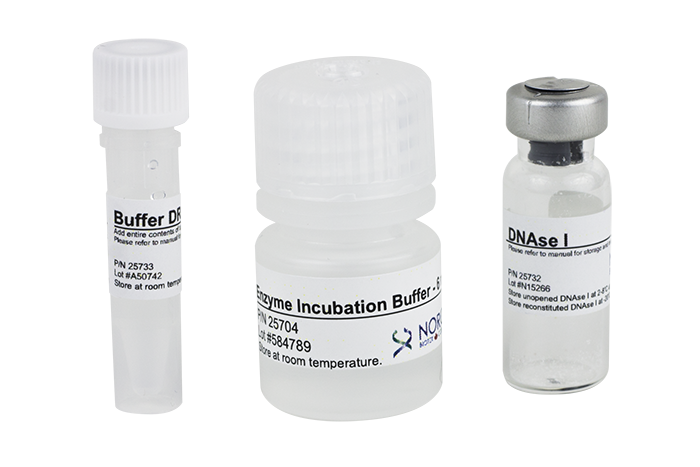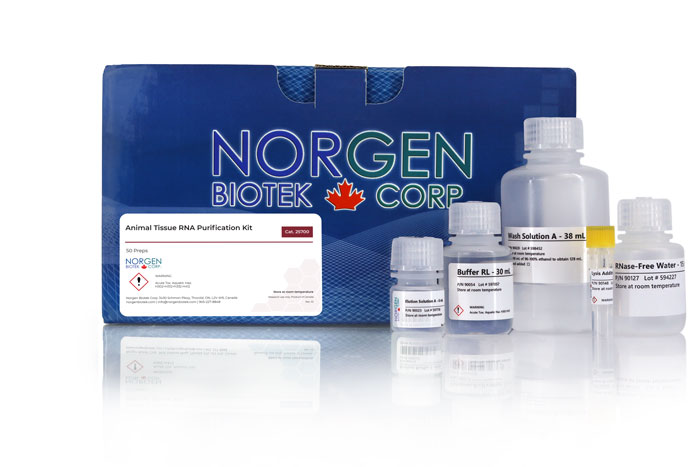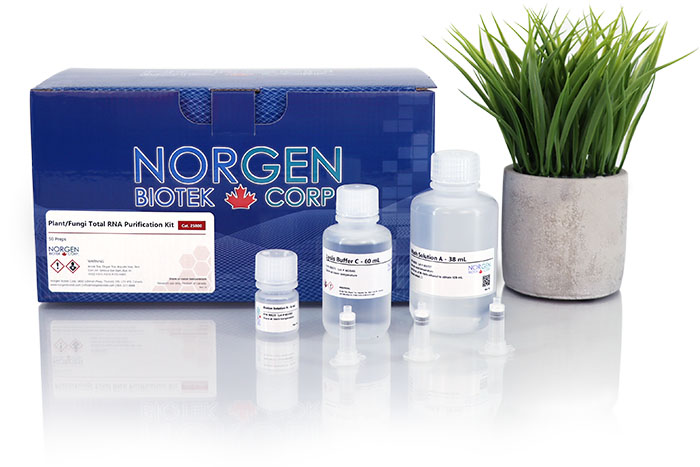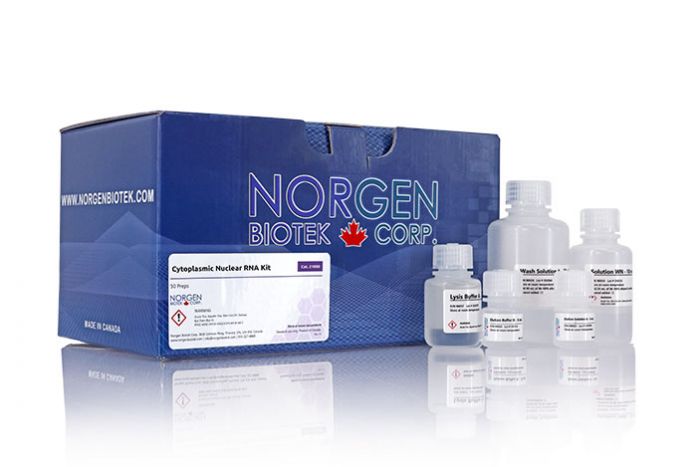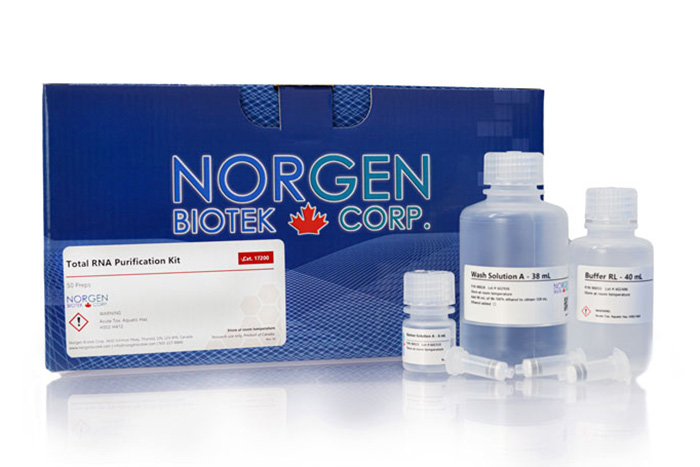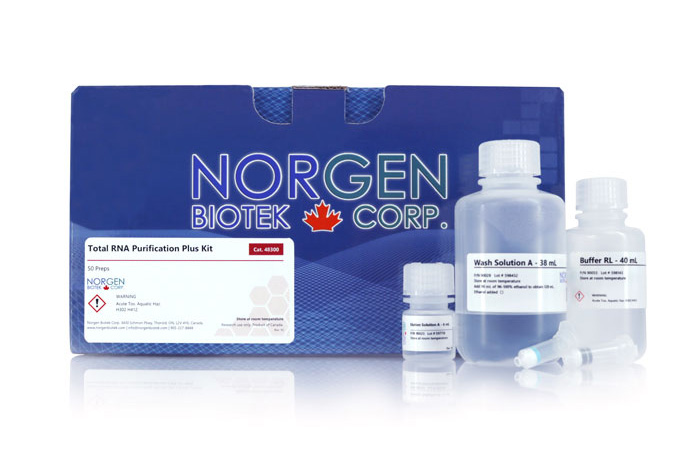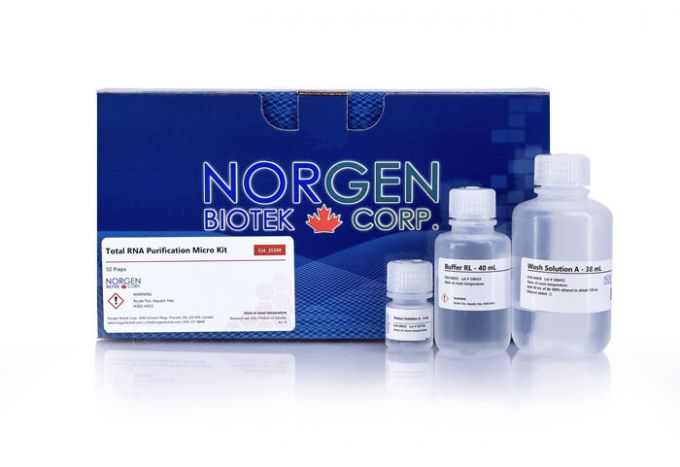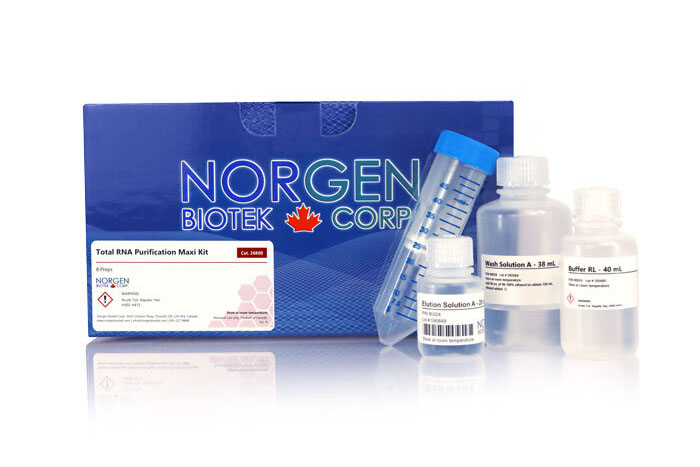Total RNA Purification Plus Micro Kit
Rapid purification of total RNA - including microRNA - from small input amounts

For research use only and NOT intended for in vitro diagnostics.
Total RNA Purification Plus Micro Kit
Rapid purification of total RNA - including microRNA - from small input amounts
Register today to receive an exclusive 15% off* on your first order.
Features and Benefits
- Extract high quality & quantity total RNA including miRNA
- Elute extracted total RNA in smaller volume (20 µL)
- No phenol step required - isolate all RNA in one fraction
- Genomic DNA Removal Column for efficient elimination of gDNA
- Bind & elute all RNA irrespective of size or GC content, without bias.
- Efficiently extract small RNA irrespective of GC content
- Very sensitive & linear down to a few cells without the need for carrier RNA
- Convenient & fast spin column format
- Purification is based on spin column chromatography that uses Norgen’s proprietary resin separation matrix
Norgen’s Total RNA Purification Plus Micro Kit provides a rapid and sensitive method for the isolation and purification of total RNA from small input amounts of cultured animal cells, tissue samples, and microdissected samples including laser-capture microdissection (LCM). The kit purifies all sizes of RNA, from large mRNA and ribosomal RNA down to microRNA (miRNA) and small interfering RNA (siRNA). Genomic DNA is removed from the sample using a Genomic DNA Removal column, and the RNA is preferentially purified from other cellular components such as proteins, without the use of phenol or chloroform. The purified RNA is of the highest integrity, and can be used in a number of downstream applications including real time PCR, reverse transcription PCR, Northern blotting, RNase protection and primer extension, and expression array assays.
Norgen’s Purification Technology
Purification is based on spin column chromatography using Norgen’s proprietary resin as the separation matrix. The RNA is preferentially purified from other cellular components such as proteins without the use of phenol or chloroform. The process involves first lysing the cells or tissue of interest with the provided Buffer RL (please see the flow chart on page 4). The DNA is then captured on a Genomic DNA Removal Column. Ethanol is then added to the flowthrough of the DNA removal step, and the solution is loaded onto an RNA Purification Micro Column. Norgen’s resin binds RNA in a manner that depends on ionic concentrations. Thus only the RNA will bind to the column, while the contaminating proteins will be removed in the flowthrough or retained on the top of the resin. The bound RNA is then washed with the provided Wash Solution A in order to remove any remaining impurities, and the purified total RNA is eluted with the Elution Solution A. The special design of the micro spin-column allows a small elution volume of as little as 20 μL. The purified RNA is of the highest integrity, and can be used in a number of downstream applications.
Details
Supporting Data
Figure 1. Great Isolation Sensitivity. Norgen's Total RNA Purification Plus Micro Kit allows sensitive RNA extraction from as little as a single cell. Total RNA was extracted from a decreasing number of HeLa cells followed by RT-qPCR to detect the human S14 transcript in the isolated RNA. PCR product of S14 was detected from as little as a single cell.
|
Kit Specifications
|
|
|
Maximum Column Binding Capacity
|
35 μg
|
|
Maximum Column Loading Volume
|
650 μL
|
| Minimum Elution Volume | 20 μL |
|
Size of RNA Purified
|
All sizes, including |
|
Maximum Amount of Starting Material: |
5 x 105 cells Up to 7.5 mL |
| Time to Complete 10 Purifications |
22 minutes
|
| Average Yield* HeLa Cells (1 x 105 cells) |
1.5 μg
|
* for fibrous tissue, an additional Proteinase K treatment is required
Storage Conditions and Product Stability
All solutions should be kept tightly sealed and stored at room temperature. This kit is stable for 1 year after the date of shipment.
| Component | Cat. 48500 (50 preps) |
|---|---|
| Buffer RL | 40 mL |
| Wash Solution A | 38 mL |
| Elution Solution A | 6 mL |
| Genomic DNA Removal Column | 50 |
| RNA Purification Micro Column | 50 |
| Collection Tubes | 100 |
| Elution Tubes (1.7 mL) | 50 |
| Product Insert | 1 |
Documentation
FAQs
Micro Plus
Poor RNA recovery could be due to one or more of the following:
- Incomplete lysis of cells or tissue. Ensure that the appropriate amount of Buffer RL was used for the amount of cells or tissue.
- Column has become clogged. Either the Genomic DNA Removal Column or the RNA Purification Column may become clogged if the recommended amount of starting materials is exceeded. The amount of starting material may need to be decreased if the column shows clogging below the recommended levels. See FAQ related to “Clogged Column” below.
- An alternative elution solution was used. It is recommended that the Elution Solution A supplied with this kit be used for maximum RNA recovery.
- Ethanol was not added to the lysate. Ensure that the appropriate amount of ethanol is added to the lysate before binding to the column.
- Ethanol was not added to the Wash Solution A. Ensure that 90 mL of 96 - 100% ethanol is added to the supplied Wash Solution A prior to use.
- Low RNA content in cells or tissues used. Different tissues and cells have different RNA contents, and thus the expected yield of RNA will vary greatly from these different sources. Please check literature to determine the expected RNA content of your starting material.
- Cell Culture: Cell monolayer was not washed with PBS. Ensure that the cell monolayer is washed with the appropriate amount of PBS in order to remove residual media from cells.
- Yeast: Lyticase was not added to the Resuspension Buffer. Ensure that the appropriate amount of lyticase is added when making the Resuspension Buffer.
- Bacteria and Yeast: All traces of media not removed. Ensure that all media is removed prior to the addition of the Buffer RL through aspiration.
Column clogging can result from one or combination of the following factors:
- Insufficient solubilization of cells or tissues. Ensure that the appropriate amount of lysis buffer was used for the amount of cells or tissue.
- Maximum number of cells or amount of tissue exceeds kit specifications. Refer to specifications to determine if the amount of starting material falls within kit specifications.
- High amounts of genomic DNA present in sample. The lysate may be passed through a 25 gauge needle attached to a syringe 5-10 times in order to shear the genomic DNA prior to loading onto the column.
- Centrifuge temperature is too low. Ensure that the centrifuge remains at room temperature throughout the procedure. Temperatures below 15°C may cause precipitates to form that can cause the columns to clog.
RNA can be degraded due to the following factors:
- RNase contamination. RNases may be introduced during the use of the kit. Ensure proper procedures are followed when working with RNA. Please refer to “Working with RNA” at the beginning of this user guide.
- Procedure not performed quickly enough. In order to maintain the integrity of the RNA, it is important that the procedure be performed quickly. This is especially important for the Cell Lysate Preparation Step in the Tissue Protocol, since the RNA in animal tissues is not protected after harvesting until it is disrupted and homogenized.
- Improper storage of the purified RNA. For short term storage, RNA samples may be stored at –20°C for a few days. It is recommended that samples be stored at –70°C for longer term storage.
- Frozen tissues were allowed to thaw prior to RNA isolation. Do not allow frozen tissues to thaw prior to grinding with mortar and pestle in order to ensure that the integrity of the RNA is not compromised.
- Starting material may have a high RNase content. For starting materials with high RNase content, it is recommended that β-mercaptoethanol be added to the Lysis Solution.
- Lysozyme or lyticase used may not be RNase-free. Ensure that the lysozyme and lyticase being used with this kit is RNase-free, in order to prevent possible problems with RNA degradation.
If the RNA does not perform well in downstream applications, it may be due to one or more of the following:
- RNA was not washed 3 times with the provided Wash Solution A. Traces of salt from the binding step may remain in the sample if the plate is not washed 3 times with Wash Solution A. Salt may interfere with downstream applications, and thus must be washed from the column.
- Ethanol carryover. Ensure that the dry spin under the Column Wash Procedure is performed, in order to remove traces of ethanol prior to elution. Ethanol is known to interfere with many downstream applications.
The contamination with genomic DNA may be due to large amount of starting material used. Perform RNase-free DNase I digestion on the RNA sample after elution to remove genomic DNA contamination. It is recommended that Norgen’s RNase-Free DNase I Kit (Product # 25710) be used for this step.
The Total RNA Purification "Plus" micro kit comes with gDNA removal columns for efficient removal of genomic DNA.
Citations
| Title | Rose Bengal Photodynamic Therapy (RB-PDT) Modulates the Inflammatory Response in LPS-Stimulated Human Corneal Fibroblasts By Influencing NF-?B and p38 MAPK Signaling Pathways |
| Citation | Current Eye Research 2024. |
| Authors | Ning Chai,Tanja StachonORCID Icon,Tim Berger,Zhen Li,Maryam Amini,Shweta Suiwal,Berthold Seitz,Achim LangenbucherORCID Icon &Nóra Szentmáry |
| Title | Subtype Distribution of Blastocystis spp. in Patients with |
| Citation | Journal of Leukocyte Biology 2024. |
| Authors | Daniela Angela Covino1§, Iole Farina1§, Laura Catapano1 , Silvia Sozzi1 , Francesca Spadaro2 5 , Serena Cecchetti2 , Cristina Purificato1 , Maria Cristina Gauzzi1 , Laura Fantuzzi1 |

